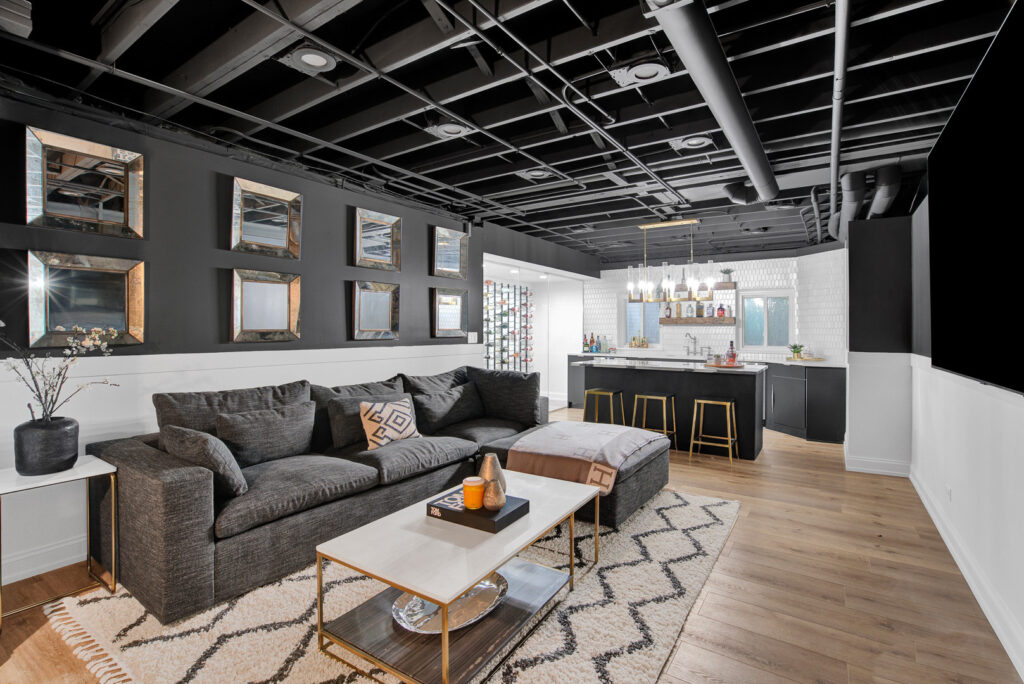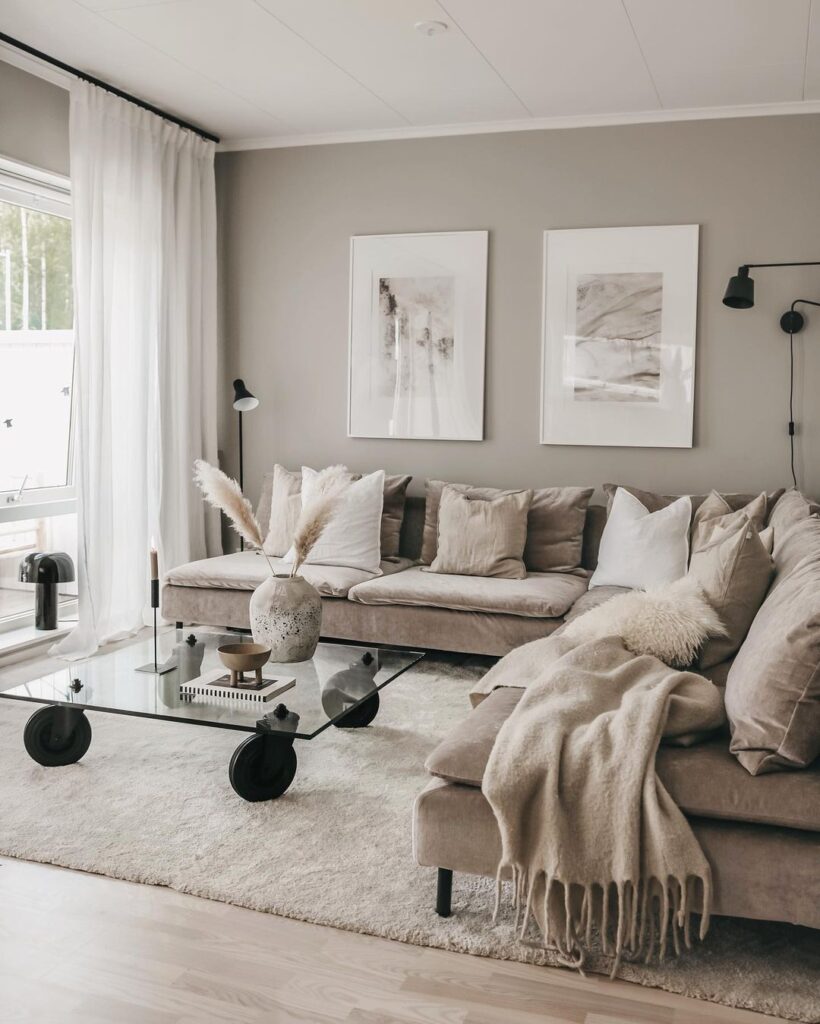
Introduction
Are you ready to revamp your living room and infuse it with a touch of sophistication? One of the most versatile and timeless color choices for interior design is none other than gray. Gray has the remarkable ability to adapt to various styles, from contemporary to traditional, and its neutral nature provides an ideal backdrop for showcasing your personal style. But with an extensive range of gray shades available, how can you choose the right one for your living room design? In this comprehensive guide, we will delve into the world of gray and unveil expert tips to help you navigate the myriad of options. Get ready to embark on a journey of color exploration and discover the secrets of choosing the perfect shades of gray for your living room design.
Choosing the Right Shades of Gray for Your Living Room Design
When it comes to selecting the perfect shades of gray for your living room, it’s essential to consider various factors such as lighting, existing decor, and personal preferences. Let’s dive into the key aspects to keep in mind:
1. Assess the Natural Lighting
The interplay between natural and artificial lighting can significantly impact the appearance of gray shades in your living room. Natural light brings out the subtle undertones of gray, allowing you to appreciate the complexities of this captivating color. Take note of how sunlight filters through your windows and observe how different gray swatches respond to changing light conditions throughout the day.
2. Determine the Room’s Orientation
The orientation of your living room plays a vital role in selecting the right shades of gray. North-facing rooms tend to receive cooler light, making warm gray tones an excellent choice to counterbalance the coolness. Conversely, south-facing rooms bask in abundant sunlight, enhancing the warmth of gray shades. East-facing rooms enjoy morning sunlight, which beautifully illuminates cool grays, while west-facing rooms benefit from the warm glow of the afternoon sun, enhancing the richness of gray tones.
3. Consider Existing Decor and Furnishings
To create a harmonious living room design, it’s crucial to consider your existing decor and furnishings. Take note of the colors and styles prevalent in your space. If you have vibrant furniture or artwork, opt for lighter shades of gray to allow those elements to shine. In contrast, if you have a minimalist or monochromatic aesthetic, you can experiment with darker and bolder gray tones to add depth and visual interest.
4. Explore Undertones and Hue
Gray may be considered a neutral color, but it possesses a spectrum of undertones and hues that can influence the overall mood of your living room. Undertones can range from cool blue to warm beige and can significantly impact the atmosphere you wish to create. Consider the existing elements in your space and determine whether cooler or warmer undertones would complement your desired ambiance.
5. Think About the Room’s Size
Gray is renowned for its ability to create an illusion of spaciousness. If you have a small living room, lighter shades of gray can make the space feel larger and more open. On the other hand, if you have a generously sized living room, you can experiment with darker shades to create an intimate and cozy atmosphere.

6. Test Swatches in Different Lighting Conditions
Before committing to a specific shade of gray, always test swatches in your living room under different lighting conditions to see how they interact with the room’s lighting. The appearance of gray can vary significantly depending on the time of day and the type of lighting fixtures you have. Take the swatches and place them on different walls, observing how they change in natural light, artificial light, and during the evening hours. This will give you a better understanding of how each shade will look in your living room throughout the day.
7. Embrace Contrast with Accent Colors
While gray is a versatile and sophisticated color, adding pops of accent colors can elevate your living room design and create visual interest. Consider incorporating vibrant hues like mustard yellow, emerald green, or deep navy as accent colors against your chosen shades of gray. These accent colors can be introduced through throw pillows, artwork, rugs, or even statement furniture pieces. The contrast between the gray backdrop and the vibrant accents will infuse your living room with energy and personality.
8. Create Texture with Different Materials
To prevent your gray living room from feeling flat or monotonous, incorporate various textures and materials into your design. Experiment with different fabric choices for upholstery, such as velvet, linen, or tweed, to add depth and tactile appeal. Mix and match materials for your furniture, such as combining a sleek leather sofa with a textured fabric armchair. Additionally, layering rugs, incorporating woven baskets, and introducing metallic accents can further enhance the visual interest of your living room.
9. Play with Light and Dark Contrasts
When working with shades of gray, don’t limit yourself to a single tone. Instead, consider incorporating light and dark contrasts within your design. Pair lighter shades of gray with darker accents, such as charcoal or slate, to create a visually striking effect. This contrast adds depth and dimension to your living room, making it feel more dynamic and inviting. Experiment with different combinations to find the right balance that resonates with your style.
10. Seek Inspiration from Nature
Nature is an endless source of inspiration when it comes to color palettes. Look to the natural world for inspiration, and consider incorporating earthy tones alongside your gray color scheme. Soft greens, warm browns, and hints of blue can create a serene and tranquil atmosphere. Whether it’s through indoor plants, natural materials, or artwork depicting landscapes, the combination of gray and nature-inspired hues can bring a sense of calm and harmony to your living room design.

FAQs about Choosing the Right Shades of Gray for Your Living Room Design
Q1: How do I decide between warm and cool shades of gray?
A1: The decision between warm and cool shades of gray depends on the ambiance you want to create. If you prefer a cozy and inviting atmosphere, opt for warm grays with beige or brown undertones. For a more contemporary and refreshing feel, cool grays with blue or green undertones are ideal.
Q2: Can I combine different shades of gray in the same room?
A2: Yes! Combining different shades of gray can add depth and visual interest to your living room. Just make sure to create contrast by selecting lighter and darker shades that complement each other.
Q3: How can I make my small living room appear larger with gray shades?
A3: Lighter shades of gray, particularly those with cool undertones, can create the illusion of space in a small living room. Pair them with ample natural light, strategically placed mirrors, and minimal clutter to enhance the spaciousness.
Q4: Are there any colors that don’t go well with gray?
A4: Gray is a versatile color that pairs well with most colors. However, be cautious with bright, neon shades that might clash with the subtle elegance of gray. It’s always helpful to consult a color wheel for complementary or analogous color schemes that harmonize with gray.
Q5: How can I make a statement with gray in my living room?
A5: To make a bold statement with gray, consider incorporating contrasting elements. Pair deep, dark shades of gray with vibrant accent colors or incorporate textured materials and patterns to create a visually striking effect. Don’t be afraid to experiment and let your personal style shine.
Q6: Can gray work in a traditional living room design?
A6: Absolutely! Gray is a versatile color that can seamlessly blend into traditional living room designs. Opt for warmer shades of gray and pair them with classic furniture pieces, elegant drapery, and traditional patterns to create a timeless and sophisticated ambiance.
Conclusion
Choosing the right shades of gray for your living room design is an exciting opportunity to transform your space into a haven of style and elegance. By considering factors such as lighting, room orientation, existing decor, and personal preferences, you can find the perfect gray tones that will enhance the atmosphere of your living room. Remember to test swatches under different lighting conditions, embrace contrasts with accent colors, and play with textures and materials to create a visually captivating space.
Whether you opt for warm or cool grays, a monochromatic palette or a combination of shades, gray offers endless possibilities for creating a sophisticated and inviting living room. Don’t shy away from experimenting with different tones and embracing your personal style. With the right shades of gray, your living room will become a reflection of your unique taste and a place where you can relax and entertain with style.
